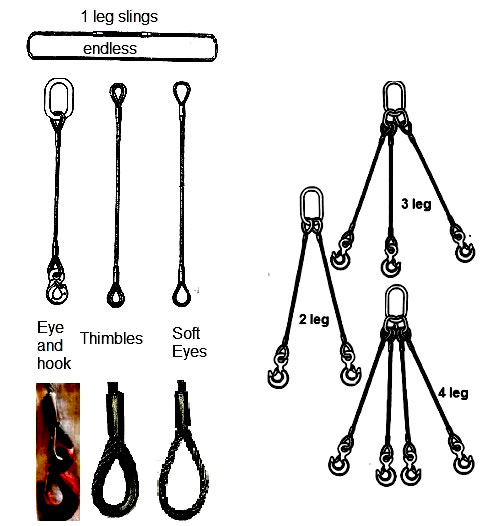- Wire Rope Products
Wire Rope Products
- Lifting Slings
- Cargo & Ratchet straps
- Fittings
Fittings
- Fibre Rope
- Tools
- Assemblies
- Balustrade Wire
- BLOGS
- CONTACT
Rope Services Direct manufacture wire rope slings in-house as well as special rope assemblies and can also supply just wire rope on its own too if required.
We can supply slings with a 2 to 3 working days turnaround. We offer a variety of terminations such as soft eyes and thimble eyes. As well as the usual 1 leg sling, we can also provide multi leg slings such as 2 leg, 3 leg and 4 leg slings.
POA
Single leg wire rope sling with masterlink & hook – what you can expectAs it..
POA
Wire Rope Double Leg Slings – Product detailsA leg refers to part of the sling, ..
POA
More information about our three leg wire rope slingsOrdering this product will ..
POA
Find out more about our 4 leg wire rope slingsThis is a highly useful wire ..
POA
Product details for endless wire rope slingsThis type of sling has no end to it,..
POA
Soft Eye Wire Rope SlingsThis particular product can be hand spliced at either e..
POA
Thimble Eye Wire Rope SlingsYou will often see equipment of this nature being ha..
About The Wire Rope Sling

Wire-rope slings offer the user an alternative lifting means to the usual chain sling with the main benefit being that if one or 2 wires or strands break, the load will usually hold on its remaining, intact wires/strands until it is set down safely, whereas with a chain sling, if a link breaks the load falls.
Wire-rope slings need to be made and used in the correct manner to prevent damage, non-rotating rope ordinary or regular lay rope is the preferred wire-rope for slinging as they are not prone to unwinding when twisting against the load, (Lang’s lay rope can easily unravel when under load unless fixed correctly at both ends) they can successfully be utilised in a straight lift, basket hitch or a choke hitch, however the safe working load will need to be de-rated when used in a basket or choke hitch according to the recommended safe use of documentation.
We can supply endless slings as well as 1, 2, 3 or 4 leg slings in any length with any fittings to best suit your requirements, the images show just the most common configurations.
Rope Services Direct have all their own machinery allowing us to tailor make a chain sling to suit your application; we can press any fitting onto your chosen wire rope, whether it be a hook or thimble with links. We can also add tubular wear sleeves to add extra protection to the wire rope and stops, if needed. Call our sales team with your requirements today or contact us by email on our contact form.
Wire rope slings are robust pieces of equipment used for lifting applications. Wire rope slings are widely used within the lifting gear and engineering industries, frequently used to lift extremely heavy loads. Used not only on hoists, but also as crane rope on the huge cranes we see at dock yards and large construction sites.
Like chain slings they are available in single leg or multi leg models; however whereas a chain sling relies on each link for strength a rope sling has countless wires to hold the load, consequently when using a chain sling if 1 link breaks the whole chain sling will fail, but with a sling if 1 or 2 wires break the whole rope will not catastrophically fail as the remaining countless intact wires will still usually support the load until it can be lowered safely.
As there are many types of wire rope constructions the rope must be chosen very carefully for its intended application because some will undoubtedly have more limitations than others. A rope sling will need a good amount of flexibility, especially if it is to be used in certain hitch types, single or multi-leg slings where the rope is used in a straight line connection from the master link to the load may need less flexibility.
A less flexible or stiffer wire rope will have more crush and abrasion resistance than a very flexible one; and can also be guided under loads and pallets which can make lifting tasks much easier.
So with the above in mind it is important to verify how you will need to utilise your rope sling before purchase so you can choose the most suitable construction type for its intended purpose.
The Safe Use of Slings
Here we take a brief look at using a wire sling in a safe manner.
When using a wire rope sling you should:
Maintenance for wire rope slings is usually minimal, if treated with respect; Â storing them correctly – hung up, not left on the ground, Â keeping them clean and re-lubricate with appropriate materials when necessary and handling them in the correct manner will ensure a long working life.
Inspections of slings should be carried out on a regular basis whilst in-service, to identify any impending problems which could severely affect the performance of the wire rope. These thorough inspections are to comply with LOLER regulations.
An experienced person should look out for the following: